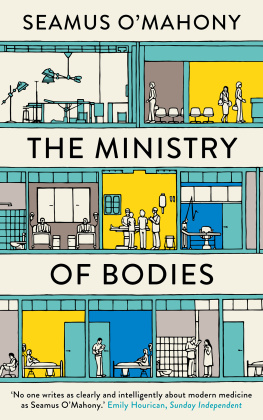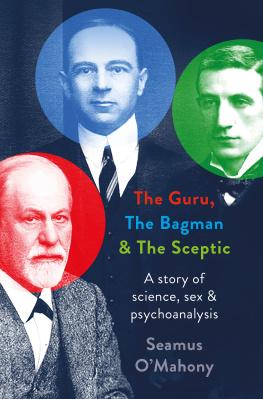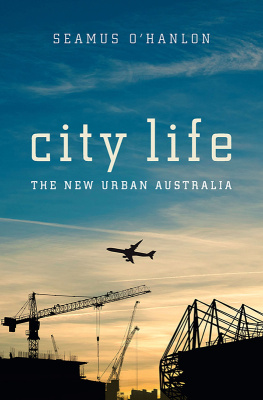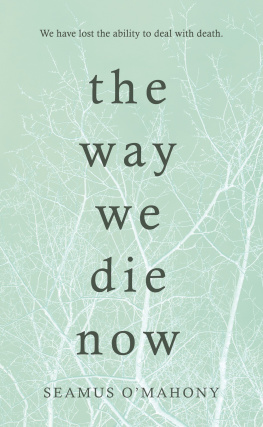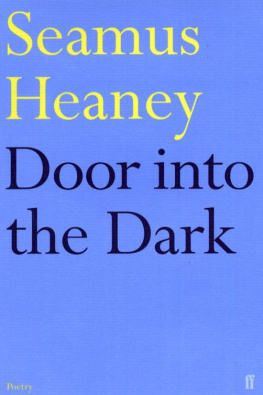Seamus OMahony - The Ministry of Bodies
Here you can read online Seamus OMahony - The Ministry of Bodies full text of the book (entire story) in english for free. Download pdf and epub, get meaning, cover and reviews about this ebook. year: 2021, publisher: Head of Zeus Ltd, genre: Detective and thriller. Description of the work, (preface) as well as reviews are available. Best literature library LitArk.com created for fans of good reading and offers a wide selection of genres:
Romance novel
Science fiction
Adventure
Detective
Science
History
Home and family
Prose
Art
Politics
Computer
Non-fiction
Religion
Business
Children
Humor
Choose a favorite category and find really read worthwhile books. Enjoy immersion in the world of imagination, feel the emotions of the characters or learn something new for yourself, make an fascinating discovery.
- Book:The Ministry of Bodies
- Author:
- Publisher:Head of Zeus Ltd
- Genre:
- Year:2021
- Rating:3 / 5
- Favourites:Add to favourites
- Your mark:
- 60
- 1
- 2
- 3
- 4
- 5
The Ministry of Bodies: summary, description and annotation
We offer to read an annotation, description, summary or preface (depends on what the author of the book "The Ministry of Bodies" wrote himself). If you haven't found the necessary information about the book — write in the comments, we will try to find it.
The Ministry of Bodies — read online for free the complete book (whole text) full work
Below is the text of the book, divided by pages. System saving the place of the last page read, allows you to conveniently read the book "The Ministry of Bodies" online for free, without having to search again every time where you left off. Put a bookmark, and you can go to the page where you finished reading at any time.
Font size:
Interval:
Bookmark:

THE MINISTRY
OF BODIES
THE MINISTRY
OF BODIES
SEAMUS OMAHONY
AN APOLLO BOOK
www.headofzeus.com
An Apollo book
First published in the UK in 2021
by Head of Zeus Ltd
Copyright Seamus OMahony, 2021
The moral right of Seamus OMahony to be identified as the author of this work has been asserted in accordance with the Copyright, Designs and Patents Act of 1988.
All rights reserved. No part of this publication may be reproduced, stored in a retrieval system, or transmitted in any form or by any means, electronic, mechanical, photocopying, recording, or otherwise, without the prior permission of both the copyright owner and the above publisher of this book.
A catalogue record for this book is available from the British Library.
ISBN (HB): 9781838931926
ISBN (XTPB): 9781800244221
ISBN (E): 9781838931940
Head of Zeus Ltd
58 Hardwick Street
London EC 1 R 4 RG
WWW . HEADOFZEUS . COM
To Karen, James and Helena
This book is based on notes not really a diary I kept over the last eight months of my career as a doctor. I decided to retire some months after I had started writing these notes. I left just before The Thing; the world I have written about now seems remote, a time of lost content. The ministry is a large Irish teaching hospital where I worked for many years. The events and people I have written about are set in a variety of locations, including the emergency department, the general wards, the intensive care unit, the outpatient clinic and the endoscopy unit.
I have quoted numerous emails, as they give a flavour not only of the ministrys institutional culture but also of the foolishness of contemporary health care. These emails came from a variety of sources, including hospital management, the regional health service headquarters, the Dublin-based head office of the health service, the local medical school, and most numerous individuals at the ministry who felt their message merited the attention of all users. Every day seemed to be consecrated to raising my awareness of a different disease, disability, field of research or human virtue. These communications were so numerous that I could easily have spent my days reading them instead of seeing patients.
Writing about real patients is difficult. I plead the usual weaselly disclaimer: every patient described in this book is a composite of several people I have known over nearly four decades. I have altered their personal details so comprehensively that no individual can be identified.
Writing about other doctors is even more difficult. Those I admired I have presented largely unaltered. The others, like the patients, are amalgams of many doctors I have worked with over the years in hospitals in three countries. If you think you recognise yourself in these pages, and do not like what you read, tell yourself that this is a novel, and any similarity to actual persons, as they say, is purely coincidental.
I have put more thought into the purchase of certain suits than into my choice of career. I had no pressing sense of philanthropy or vocation. Nowadays, when all aspiring entrants to medical school routinely and formulaically declare their altruism, this is a vaguely shocking admission. Despite these feverish protestations, young people still become doctors for the same reasons as previous generations: status and a good living. There is a lot of humbug: medical school applicants rarely put down social work or nursing as their second choice of course.
Medicine, more than most careers, colonises the lives of its practitioners. I long ago accepted that doctor was my defining role, the first word to come to mind when my name was mentioned, or even when I thought of myself, in some abstract, detached way. I have little doubt with the benefit of forty years of hindsight that my personality would have been better suited to a more contemplative life. But circumstances decreed that I should spend four decades pursuing a profession for which, when I started training for it as a teenager, I had no outstanding aptitude or suitability, apart from a knack of doing well in examinations.

The ministry and I grew up together. It was built on a large brownfield site in Wilton, in the western suburbs of Cork, near appropriately the great necropolis of St Finbarr. I lived nearby and knew this site, known then as the African Missions fields, because it was adjacent to the church and apostolic college of St Joseph, where the Society of African Missions ( Societas Missionum ad Afros or SMA) once trained young men to be missionary priests in Africa. As a boy, I was always wary of crossing this wasteland, which was patrolled by the Rogers, feral boys from Roger Casement Park, a local council estate. I do not suppose any of the Rogers made the short journey to St Josephs college to study for the priesthood.
I started medical school in October 1978; the ministry opened the next month. It was the main teaching hospital for the medical school, and the wonder of the age. On the day the ministry opened 30 November 1978 the front page of The Cork Examiner proudly proclaimed: After 40 years, the hospital doors open at The Wilton Hilton! De Paper rather lost the run of itself: The first patients may be forgiven if they feel they have been taken not into a hospital, but some wonderful time tunnel to the automated future that their great-grandchildren might know. The 40-year wait was unquestionably worthwhile for todays patient; they will find an environment that would embarrass any top class hotel and their ailment will be analysed and treated by machines that make Star Wars look like a scrapyard.
The architect who designed the ministry was a Yorkshireman called Richard DeAth. He specialised in hospitals and universities; his buildings were described by the Royal Institute of British Architects as complex and very successful in their function as well as very satisfying visually. The ministry hasnt aged well; it now looks like a neglected apartment block in some remote post-Soviet city. The Russians have a name for it: Khrushchyovka low-cost concrete-panelled or brick buildings thrown up during the Khrushchev era. The doctors and nurses who moved from the old hospital (which was built as a workhouse in 1840) to the ministry were so proud, so hopeful, but as the years passed it became, like all such institutions, the repository for problems it was never designed to accommodate, much less solve.
The main 1978 ministry building is a six-storey block with red-brick walls; several squat one- and two-storey flat-roofed ancillary buildings extend from it like crab claws. The red walls are studded with white balconies leading from the wards: did Mr DeAth anticipate that sitting out in the warm Cork sunshine would contribute to the patients recovery? Fresh air and sunshine (heliotherapy) were, after all, the cornerstone of treatment for tuberculosis in the days before antibiotics. Free access to the balconies lasted for a few short years only; I witnessed in 1984 the grisly fall to earth of a man with delirium tremens who had flung himself from a top-floor balcony. The doors leading to them may have been shut, but the white balconies remain, a tribute to Mr DeAths quixotic expectation of Irish weather . (Perhaps Im reading too much into the balconies; they may have been added simply for the convenience of the window cleaners.)
There were two wards on each floor; in a break with tradition, the wards were not named after saints, but instead were simply given the number of the floor, followed by either a or b. My home ward was 1b. Each ward had thirty-four beds, comprised of a four-bed observation unit (for the sickest patients), four six-bed rooms, four single rooms (for the infected and the dying) and one double room. The only sop to privacy in the shared rooms where most of the patients were accommodated was the flimsy brown-green patterned curtains. The floors were of linoleum and the low ceilings were covered in cheap white styrofoam tiles. It was rumoured that a great deal of asbestos was later removed. When the ministry was young, the walls were painted in various pale shades of green, brown and yellow; over the years, they all became off - white.
Font size:
Interval:
Bookmark:
Similar books «The Ministry of Bodies»
Look at similar books to The Ministry of Bodies. We have selected literature similar in name and meaning in the hope of providing readers with more options to find new, interesting, not yet read works.
Discussion, reviews of the book The Ministry of Bodies and just readers' own opinions. Leave your comments, write what you think about the work, its meaning or the main characters. Specify what exactly you liked and what you didn't like, and why you think so.

